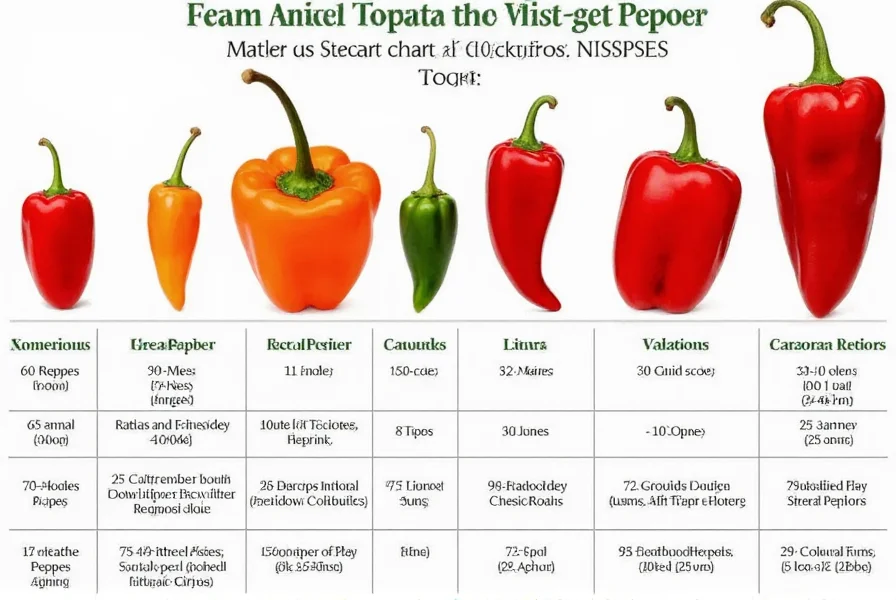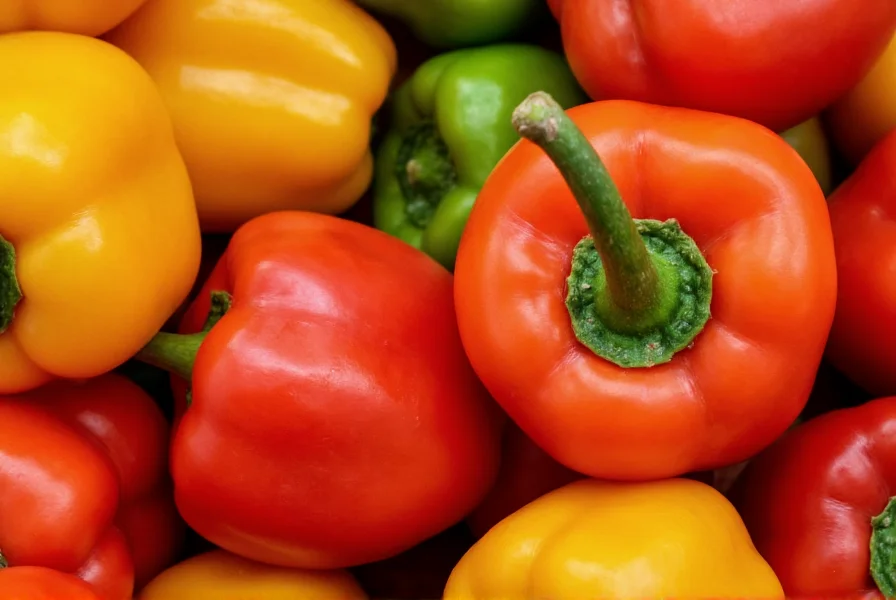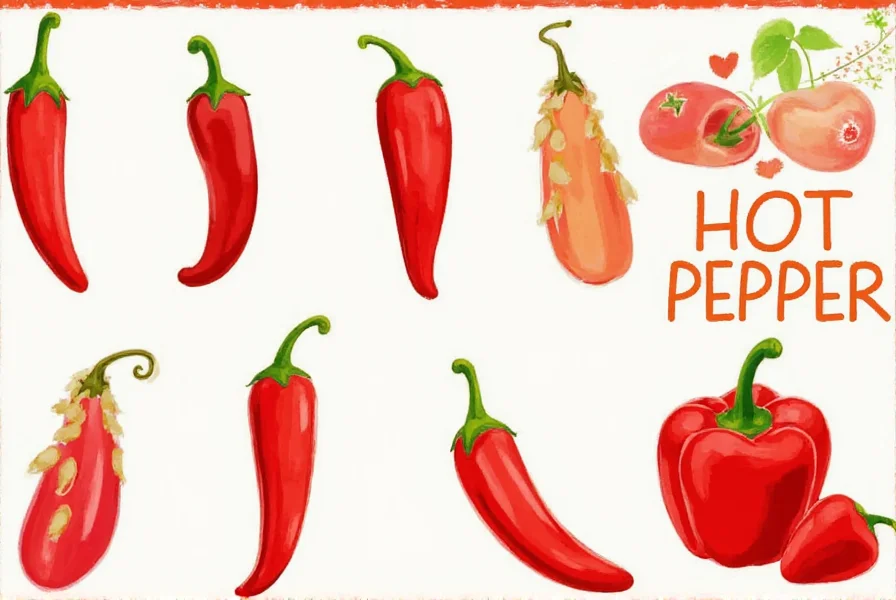Understanding hot pepper varieties is essential for both culinary success and safety. The Scoville scale, developed in 1912 by Wilbur Scoville, remains the standard measurement for capsaicin concentration—the compound responsible for heat in chili peppers. Modern testing uses high-performance liquid chromatography for precise measurements, though Scoville ratings still provide the most accessible reference for consumers.
Understanding Pepper Heat Measurement
Pepper heat isn't static—it varies based on growing conditions, soil composition, and climate. The Scoville scale measures heat in Scoville Heat Units (SHU), representing how much sugar-water dilution is needed to neutralize the burn. For example, a jalapeño measuring 5,000 SHU requires 5,000 parts of sugar-water to eliminate its heat.
Modern laboratories use high-performance liquid chromatography (HPLC) to measure capsaicinoids directly, then convert these measurements to Scoville units. This scientific approach provides more consistent results than the original human-taster method, though consumer-facing information still uses the familiar Scoville scale.
Complete Hot Pepper Reference Guide
Our comprehensive hot pepper list organizes varieties from mildest to hottest, with verified heat ranges and practical usage information. Each entry includes growing zones, flavor notes, and culinary applications to help you select the perfect pepper for your needs.
| Pepper Variety | Scoville Range (SHU) | Appearance | Flavor Profile | Common Uses |
|---|---|---|---|---|
| Bell Pepper | 0 | Green, red, yellow, orange | Sweet, vegetal | Salads, stuffed peppers, stir-fries |
| Poblano | 1,000-2,000 | Dark green, heart-shaped | Earthy, mild heat | Chiles Rellenos, mole sauce |
| Jalapeño | 2,500-8,000 | Green to red, 2-3 inches | Grassy, bright heat | Salsa, pickled, nachos |
| Serrano | 10,000-23,000 | Green to red, slender | Sharp, clean heat | Pico de gallo, hot sauces |
| Habanero | 100,000-350,000 | Orange, lantern-shaped | Fruity, floral, intense | Caribbean sauces, hot sauces |
| Ghost Pepper (Bhut Jolokia) | 800,000-1,041,427 | Red, wrinkled | Smoky, sweet then fiery | Extreme hot sauces, challenges |
| Carolina Reaper | 1,400,000-2,200,000 | Red, bumpy, tail-like | Fruity, floral, then extreme burn | Commercial hot sauces, novelty |

Mild to Medium Heat Peppers (0-30,000 SHU)
These accessible peppers work well for everyday cooking and introducing spice to dishes. The poblano, often roasted and stuffed, develops a rich, earthy flavor when charred. Jalapeños offer versatile heat that intensifies when seeds and membranes are included. Serranos provide a cleaner, brighter heat preferred in fresh salsas.
For gardeners, these varieties typically mature in 60-90 days and thrive in USDA zones 8-11. When handling, wear gloves if processing multiple peppers, as capsaicin can transfer to sensitive areas. Mild peppers like poblanos often sweeten when left to ripen to red on the plant.
High Heat Varieties (100,000-500,000 SHU)
Habaneros and Scotch Bonnets deliver intense heat with distinctive fruity notes. These peppers require careful handling—always use gloves and avoid touching your face. The heat builds gradually, reaching peak intensity after 30-45 seconds. In Caribbean cuisine, habaneros balance tropical fruit flavors in sauces and marinades.
Growing these peppers requires patience—they need 90-120 days to mature and prefer warm, humid conditions. The distinctive floral aroma develops best when peppers fully ripen on the plant. When cooking with high-heat varieties, start with small amounts and adjust to taste, as their potency can overwhelm other flavors.

Extreme Heat Peppers (800,000+ SHU)
Peppers like the Ghost Pepper and Carolina Reaper belong in a special category. These varieties require extreme caution during handling—professional chefs often use respirators when processing them. The heat onset is delayed (15-45 seconds), then builds to an intense, prolonged burn that can last 20-45 minutes.
Contrary to popular belief, these super-hots aren't just about pain—they offer complex flavor profiles when used judiciously. The Carolina Reaper, for example, has distinct notes of sweet berry and citrus before the heat hits. In commercial applications, these peppers are typically diluted to 1-5% concentration in hot sauces to preserve flavor while managing heat.
Practical Applications in Cooking
Understanding how to incorporate different peppers transforms your cooking. Mild peppers like poblanos work best roasted and blended into sauces, while fresh jalapeños add bright heat to salsas. For consistent heat in sauces, remove seeds and membranes—the capsaicin concentration is highest there.
When substituting peppers in recipes, consider both heat and flavor profile. A serrano can replace jalapeños for more heat, but habaneros won't substitute well for milder varieties without significant adjustment. Dried peppers like chipotles (smoked jalapeños) offer different flavor dimensions than fresh counterparts.
Safety Considerations for Handling Hot Peppers
Proper handling prevents painful accidents. Always wear nitrile gloves when processing hot peppers, especially varieties above 50,000 SHU. Work in well-ventilated areas—capsaicin aerosolizes during cutting. Never touch your face, and wash hands thoroughly with soapy water (not just water) after handling.
If capsaicin contacts skin, apply milk or yogurt—the casein protein binds to capsaicin. For eye exposure, flush with saline solution. When cooking with super-hots, keep dairy products nearby to neutralize mouth burn. Remember that cooking doesn't destroy capsaicin—it becomes more concentrated as water evaporates.
Frequently Asked Questions
What's the mildest hot pepper on the Scoville scale?
Bell peppers register at 0 Scoville Heat Units (SHU), making them the mildest variety. Within hot peppers specifically, the poblano (1,000-2,000 SHU) and Anaheim (500-2,500 SHU) are among the mildest options that still provide noticeable heat.
How can I reduce the heat of a pepper in cooking?
Remove the seeds and white membranes (placenta) where most capsaicin concentrates. Soaking chopped peppers in vinegar or salt water for 15-30 minutes can also reduce heat. Cooking with dairy products like yogurt or cheese helps counteract capsaicin's effects during consumption.
Why do some peppers of the same variety have different heat levels?
Pepper heat varies due to growing conditions—stressors like inconsistent watering, temperature fluctuations, and soil composition increase capsaicin production. Two peppers from the same plant can differ in heat based on their position on the plant and ripeness stage when harvested.
Can you build tolerance to hot peppers over time?
Yes, regular consumption of capsaicin temporarily desensitizes TRPV1 receptors responsible for heat sensation. This builds tolerance that requires increasingly spicy foods to achieve the same sensation. However, this tolerance resets after several weeks without exposure.











 浙公网安备
33010002000092号
浙公网安备
33010002000092号 浙B2-20120091-4
浙B2-20120091-4